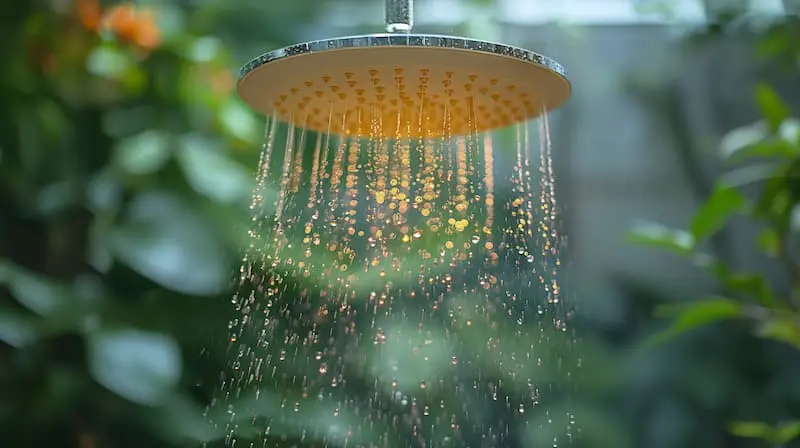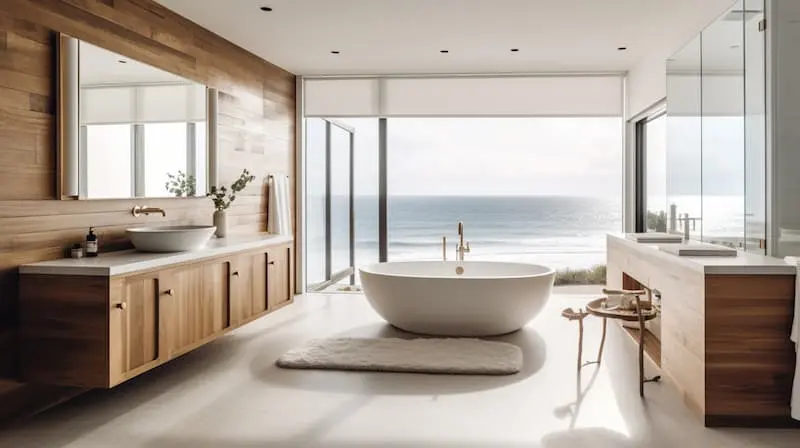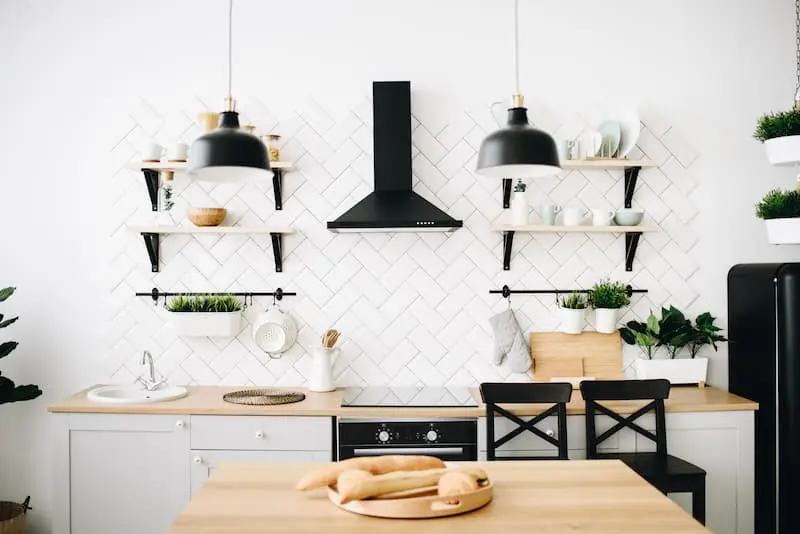With a growing awareness of how their choices can impact the planet, homeowners are more actively seeking sustainable choices when designing, decorating and furnishing their homes, but does opting for greener features mean scaling back on style or limiting function?
It’s a common conflict for homeowners, evidenced by some of the hottest trends that tend to be at the top of house hunting wish lists, including deep soaker tubs, steam rooms and restaurant-worthy entertainment spaces with multiple appliances, all of which require a lot of power, water or both to operate. In short, a lot of coveted design features are not, at face value, eco-friendly.
Does that mean that homeowners need to sacrifice when planning a dream home?
Not necessarily. Sustainability in housing “is not all or nothing. There are shades,” says Marla Esser Cloos of The Green Home Coach
While particularly motivated homeowners might opt for off-grid, passive, zero-energy or zero-energy ready homes, it is important to remember that balancing sustainable and aesthetic choices is more nuanced and that smaller choices can combine for larger impact.
In reality, creating a home that favors sustainability is less about choosing Product A over Product B, and more about understanding how the myriads of choices made when designing, decorating and living in a house intersect. It’s about striking an equilibrium that makes room for multiple priorities at the same time.
The idea is to frame decisions with a lens of sustainability, and with each step taken, to try to maintain or shrink the overall footprint, depending on a homeowner’s goals.
Homeowners will be pleased to learn that the shelter industry is leaning heavily into sustainable products, increasing choices that are sleek, sustainable and comfortable. Even better news for new construction homeowners, if sustainability is the goal, new builds are literally the perfect place to start.
The unique opportunity for sustainability with a new build
One of the most alluring benefits of a new build is the opportunity to start from scratch, aligning with aesthetic and lifestyle goals most accurately, but brand new also offers the most bang for the buck, sustainably speaking.
It’s much easier to implement sustainable choices during construction than to retrofit afterwards. That is in part because of the key role that structural elements play in creating a sustainable home, from overall construction methods to windows, plumbing, insulation and mechanical systems.
There is also inherent efficiency in being able to look at the home holistically in the context of sustainability, most easily done during construction and the initial design as well.
Similarly, new homes tend to benefit from the latest tech, higher-quality materials (many of which can be chosen sustainability and responsibly) and efficient space planning that elevates the eco-friendly quotient.
Where do I start?
Sustainable living is rooted in functional design. A functional home is comfortable and will require less changes from a homeowner over time, reducing trips to the landfill. It’s also the foundation from which to choose sustainable elements that will enhance lifestyle and reduce homeowner footprint.
After deciding on a function-first floor plan or design, consider the elements that will combine to finish and furnish the various spaces, Esser Cloos encourages homeowners to ask, “How are materials going to benefit my health and wellness?”, pointing out that many materials that are healthy for us are usually healthy for the planet at the same time.
As a basic guideline, choose materials that don’t off gas or that you know are natural.
“Look for materials and building elements that are responsibly sourced and have low Volatile Organic Compounds (VOCs),” says Esser Cloos.
“Look for independent third-party approval,” to gauge the sustainable value of a given product, home or built environment, says Esser Cloos.
Some third-party seals to watch for include:
- Energy Star
- Water Sense
- Leadership in Energy and Environmental Design (LEED)
- Green Seal
- Green Guard
- National Green Building Standard
- Global Organic Texture Standard
- Cradle to Cradle
The kitchen and bath sustainability conundrum
Kitchens and bathrooms are where homeowners focus a lot of their budget, as well as their time at home, so function and style are paramount. These rooms are notoriously heavy with water and power use.
It can be helpful to have a sustainable “budget” in mind, with the option to swap items out, accordingly. Esser Cloos likens the process to being on a calorie-restricted diet, but “splurging on dessert, so you find other ways to cut back during the day,” to yield the desired results.
In addition to LED lighting and eco-friendly fixtures, material choices are the ticket to a smaller footprint.
Take the centerpiece of the spa-like bathroom trend that is ruling 2024: An aesthetically powerful, elegant, deep soaker tub. There is no denying that baths, while luxe, use considerably more water than a shower.
Look at the bathroom feature-by-feature to find ways to scale back the footprint, according to Kendal Cavalieri, founder and principal designer of Kendal Cavalieri Design.
“Instead of an acrylic tub, choose cast iron, concrete or natural stone,” she says, all of which are more environmentally friendly.
Countertops and cabinetry can be chosen in a sustainable way as well. “Think about natural stone or terrazzo for counters,” says Cavalieri.
“For cabinets, think reclaimed or other recycled woods, and natural materials,” she says.
A word on steam showers, which are a hot amenity, and are also touted as a sustainable option, because they technically use less water. They do however require a great deal of electricity to run, and a steam shower isn’t a used as a “shower” for bathing purposes; in fact, most people require a traditional shower after using a steam shower. Not a deal-breaker, but factor this into the overall sustainability budget.
In the kitchen, use a similar approach regarding materials, but Cavalieri encourages homeowners to think critically about how they will use the kitchen, and to apply a strict needs versus wants matrix to keep sustainability present.
Luxe features in a kitchen built for home cooks include dual sinks, pot fillers and multiple appliances, which may be present as much for convenience as for functionality.
“Do you need the pot filler?” or could you design more simply with a smart kitchen triangle, saving steps and potentially water, asks Cavalieri.
Don’t underestimate function, especially in the kitchen, where it is most likely to sideline your sustainability goals, according to Cavalieri. If it’s not easy to use in a high-traffic area, it’s likely to cause friction in the daily routine, and may even need replacing, which comes at a financial and environmental cost.
More ways to shrink your housing footprint
Homeowners are likely familiar with LED lights, high-efficiency energy systems, water-saving fixtures and sustainable material choices to reduce their footprint, but here are some additional tips.
- Be trendless. Although color is trending heavily throughout the home, homeowners who want to be sustainable are better served with classic designs that won’t need to be replaced when trends fade. Renovations add significantly to landfills.
- Plant trees. Adding to your landscaping with trees and native plants, flowers and shrubs helps the local ecosystems.
- Pick your floor plan carefully. Compact, smart design literally shrinks a housing footprint versus lofty spaces that require more material and energy to build and maintain.









